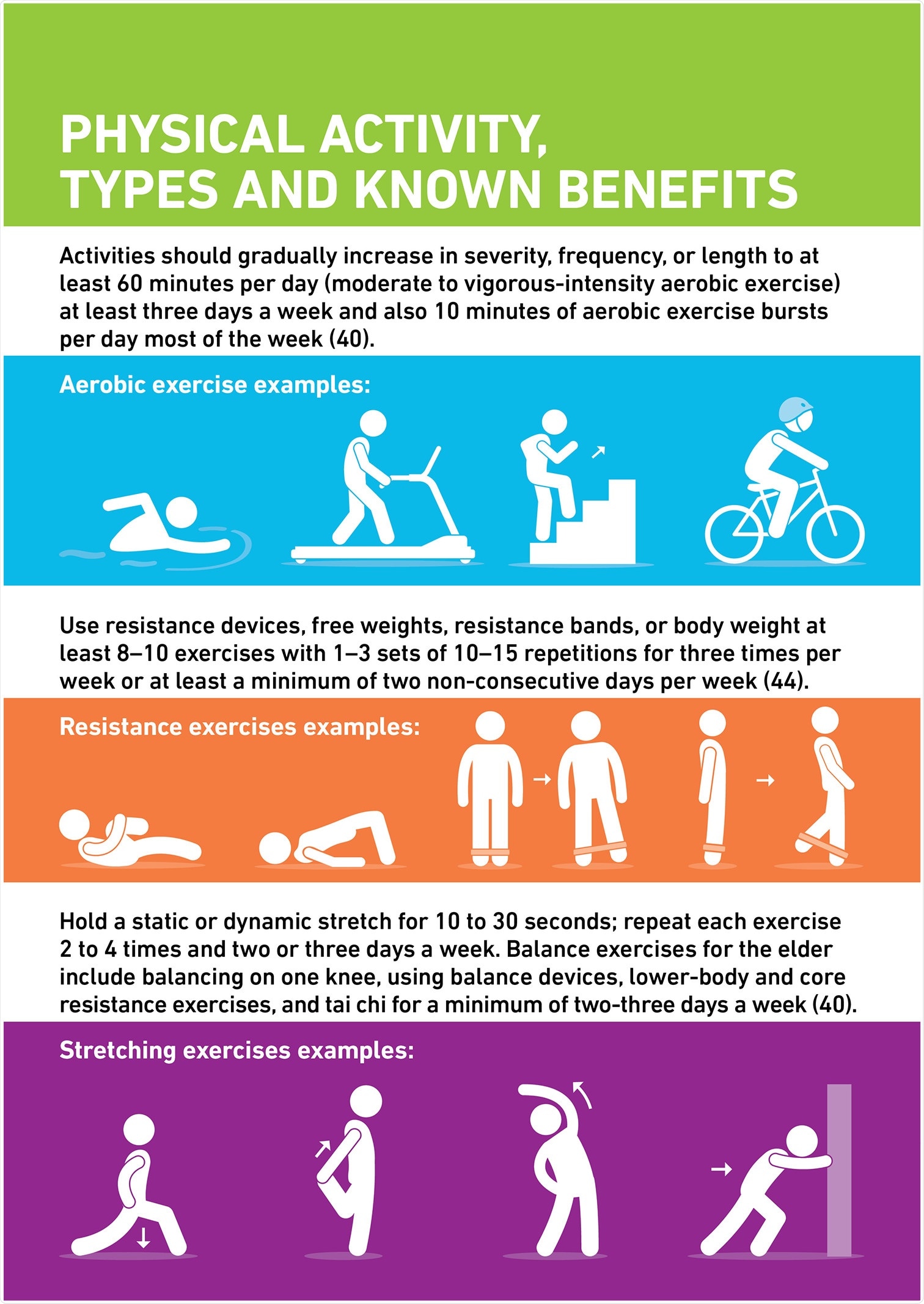Physical activity and exercise are essential for managing type 2 diabetes. Exercise is also beneficial for the immune system; therefore, physical activity effectively reduces hospitalization rates of patients with coronavirus disease 2019 (COVID-19).
 Study: The importance of physical activity in management of type 2 diabetes and COVID-19. Image Credit: Lordn / Shutterstock.com
Study: The importance of physical activity in management of type 2 diabetes and COVID-19. Image Credit: Lordn / Shutterstock.com
Type 2 diabetes
Diabetes mellitus is characterized by abnormal glucose metabolism. Over the past several years, the occurrence of diabetes has increased. Currently, it is the fourth leading cause of non-communicable diseases worldwide.
Type 2 diabetes arises due to decreased insulin production, insulin resistance, or both. Generally, this type of diabetes is more common in overweight people or with those who are involved with a low amount of physical activity or both.
COVID-19
COVID-19 usually begins with an asymptomatic incubation period of 1 to 14 days. In about 80% of cases, COVID-19 manifests as a mild illness that may be accompanied by symptoms like fever, cough, sore throat, nausea, shortness of breath, headache, myalgia, loss of smell and taste, chills, vomiting, and diarrhea.
In hospitalized patients with COVID-19, diabetes is a risk factor for mortality and high rates of disease progression. COVID-19 patients with diabetes need more medical interventions and have a greater likelihood of multiple organ damage than those without diabetes. Moreover, high blood sugar aggravates inflammation. Studies on other viruses have shown that inflammation increases the risk of infection.
Physical inactivity and health
Healthy People 2020 objectives and the United Kingdom National Institute for Health and Care Excellence (NICE) recommendations emphasize increasing physical activity as an important part of treatment for many chronic diseases like heart disease, diabetes, and musculoskeletal disorders. Furthermore, physical activity has significant health benefits, including lowering mortality rates.
In people with type 2 diabetes, physical activity is associated with reduced systolic pressure and lowered risk of diabetes-related complications, death, and heart attack. In addition, one study has shown that exercise increases insulin sensitivity in adults with type 2 diabetes. Physical activity also reduces the likelihood of developing type 2 diabetes.
Physical inactivity has a massive effect on global health. It is associated with a higher risk of COVID-19 hospitalization.
Further, physical inactivity causes 7.2% of type 2 diabetes cases and 9.4% of mortality worldwide. A global survey has estimated the prevalence of physical inactivity in 57.7% of individuals at risk for type 2 diabetes and in 57.3% among the general population.
Physical activity
Types
Aerobic exercises include activities such as running, jogging, cycling, and swimming that may vary from moderate to vigorous in intensity. These exercises are suggested to individuals with type 2 diabetes to enhance their quality of life. High-intensity interval training involves repeated periods of intense exercise separated by intervals of rest.
Resistance training includes exercises aimed at increasing muscle strength and stamina using bodyweight, devices, or resistance bands. Flexibility and balance are essential for preserving range of motion and may prove beneficial for people with diabetes. Flexibility exercises include yoga, tai chi, and body stretches.
Benefits
Physical exercises are beneficial for improving acute and chronic health conditions. For example, studies have demonstrated improvements in insulin action due to low- to moderate-intensity activity in people with type 2 diabetes. Similar enhancements in insulin sensitivity have been observed due to low-intensity or high-intensity walking in women with type 2 diabetes.
Exercise interventions alone are effective in avoiding increases in blood sugar, body weight, blood pressure, heart disease, and mortality in type 2 diabetes patients. Resistance exercise training also may improve blood sugar regulation and insulin action in people with type 2 diabetes.
Aerobic exercise may improve fitness and quality of life in people with type 2 diabetes. Stretching improves range of motion and flexibility around joints but does not affect blood sugar control.
Increased unstructured physical activity like housework, dog walking, or gardening helps in weight control. Walking improves blood sugar control in people with prediabetes, as well as those with type 1 and type 2 diabetes, particularly after meals.
 Physical activity types and known benefits.
Physical activity types and known benefits.
COVID-19 and diabetes
Diabetes is associated with an increased risk of infections, including respiratory viruses. Diabetes is more prevalent in patients with severe COVID-19 and people with diabetes have a higher chance of intensive care unit (ICU) admission. They also have a higher incidence of comorbidities.
COVID-19 and physical activity
There is a positive correlation between physical activity level and immunity. Exercise training is associated with more effective immune defense and better blood sugar control, both of which can play a role in COVID-19-induced immune cell activation. Exercise stimulates immune cells and indirectly improves the immune response by reducing fat tissue.
Regular exercise increases flu vaccination efficacy in older adults. Several studies suggest that physical activity is a successful strategy to avoid hospitalization due to respiratory viral diseases such as COVID-19.
Regular physical activity may also prevent the onset of severe COVID-19 disease.
Physical activity for managing diabetes in a COVID era
Due to the COVID-19 pandemic, there have been strict lockdowns and the implementation of social distancing norms, both of which have resulted in reduced physical activity. Home-based exercise programs help in maintaining daily physical activity levels. Moreover, it is safe and beneficial for people with diabetes.
People can engage in dancing, playing with children, cleaning, gardening, and online exercise classes. Home-based exercise therapy programs can also improve blood sugar regulation.
People with type 2 diabetes are already less active and more sedentary than those without the disease. COVID-19 pandemic has therefore had further negative impacts on physical activity levels.
Recommendations for physical activity levels during the pandemic
Technology-based strategies have increased physical activity awareness and compliance. Such strategies may prove to be more beneficial in the current pandemic.
To this end, internet-delivered physical activity promotion strategies could be more successful than conventional approaches for adults with type 2 diabetes. These can include monitoring physical activity, goal setting, and phone/e-mail support from a mentor.
Even ten and a half minutes of light-intensity physical activity has a beneficial impact in improving heart and metabolic health in individuals who cannot follow the guidelines recommendations. Achieving a daily step count of more than 7,500 steps appears to be sufficient for individuals to reap health benefits.
A gradual increase in exercise intensity is recommended for individuals beginning an exercise regimen. The target is more than 7,500 steps until they can reach 210 minutes of moderate-intensity exercise or 125 min of vigorous-intensity activity each week.
Daily step counts and activity trackers can be beneficial in addressing physical activity issues for the individual. They also help in tracking and prescribing physical activity.
Conclusion
In conclusion, the practice of physical exercise for the treatment or prevention of type 2 diabetes is essential for management, particularly during the COVID-19 pandemic.
Prescribing physical activity as part of the diabetes management plan should involve understanding individual needs and shared decision-making. Social and family support is also needed for treatment and physical activity compliance to achieve optimal disease management and control.
Journal reference:
- Seidu, S., Khunti, K., Yates, T., et al. (2021). The importance of physical activity in management of type 2 diabetes and COVID-19. Therapeutic Advances in Endocrinology and Metabolism. doi:10.1177/20420188211054686